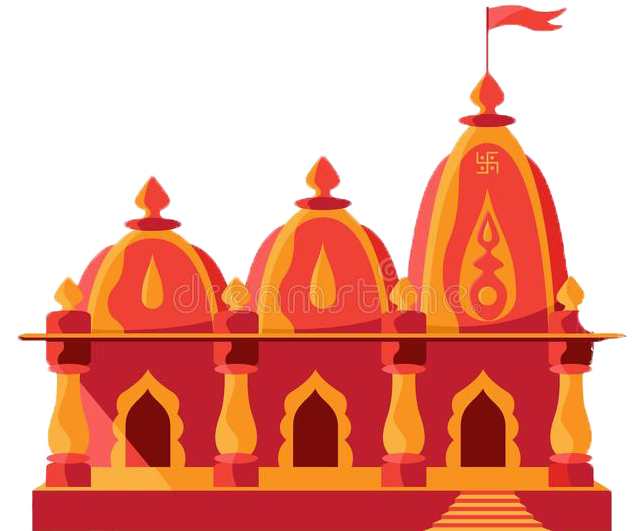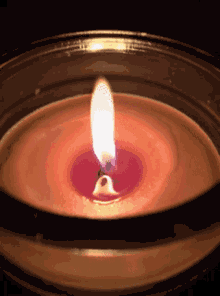This Temple Website sponsored by Mr. Anoop Singh, HSFC, Dwarka, New Delhi-110075.
Phone Numbers- 70117104088, 9136362391

Dress Code
No restrictions for any dress.
Entry Restrictions
No Restrictions, Persons of all faiths allowed.
Parking Facilities
Bike,Car,Bus and Electronic Vehicle parkings are available near the Temple.
Security and Surveillance
Volunteer yourself to be a part of Temple Security and Surveillance to ward off any Evil Attempts of Adharmik Forces.
Introduction and History in Brief
Amarnath Temple is a Hindu shrine located dedicated to Bhagwan Shiva situated in Jammu and Kashmir, India. The cave is situated at an altitude of 3,888 m (12,756 ft),[1] about 141 km (88 mi) from Srinagar, the summer capital of Jammu and Kashmir, reached through Pahalgam town. The shrine represents an important part of Hinduism,[2] and is considered to be one of the holiest shrines in Hinduism.[3] The cave is surrounded by snowy mountains. The cave itself is covered with snow most of the year, except for a short period of time in summer when it is open to pilgrims. Hundreds of thousands of Hindus and other devotees make an annual pilgrimage to the Amarnath cave across challenging mountainous terrain.
The Amarnath Cave Temple is one of the 51 Shakti Peethas, temples throughout South Asia that commemorate the location of fallen body parts of the Hindu deity Sati
According to legend, Sage Bhrigu was the first to have discovered Amarnath. A long time ago, it is believed that the Valley of Kashmir was submerged underwater, and Sage Kashyapa drained it through a series of rivers and rivulets. As a result, when the waters drained, Bhrigu was the first to have darshan of Shiva at Amarnath. Thereafter, when people heard of the lingam, it became an abode of Shiva for all believers and the site of an annual pilgrimage, traditionally performed by lakhs of people in July and August during the Hindu Holy month of Savan.[10] According to researchers and as per the belief of locals, the gadaria community were the first to discover the Amarnath Cave and saw the first glimpse of Shiva.
François Bernier, a French physician, accompanied Emperor Aurangzeb during his visit to Kashmir in 1663. In his book Travels in Mughal Empire, he provides an account of the places he visited, noting that he was “pursuing journey to a grotto full of wonderful congelations, two days journey from Sangsafed” when he “received intelligence that my Nawab felt very impatient and uneasy on account of my long absence.” The “grotto” referenced in this passage is obviously the Amarnath cave — as the editor of the second edition of the English translation of the book, Vincent A. Smith, makes clear in his introduction. He writes: “The grotto full of wonderful congelations is the Amarnath cave, where blocks of ice, stalagmites formed by dripping water from the roof are worshipped by many Hindus who resort here as images of Shiva.
Inside the 40 m (130 ft) high cave, a stalagmite is formed due to the freezing of water drops that fall from the roof of the cave onto the floor and grow upward vertically from the cave floor.[4] It is considered to be a Shiva Linga by Hindus. It is mentioned in the ancient Hindu texts of Mahabharata and Puranas that Lingam represents Shiva.[5] The lingam waxes during May to August, as snow melts in the Himalayas above the cave, and the resultant water seeps into the rocks that form the cave; thereafter, the lingam gradually wanes.[1] As per religious beliefs, it is said that the lingam grows and shrinks with the phases of the moon, reaching its height during the summer festival, although there is no scientific evidence for this belief.[6] According to Hindu religious beliefs, this is the place where Shiva explained the secret of life and eternity to his divine consort, Parvati.
The peak pilgrimage occurs when the iced stalagmite Shiva lingam reaches the apex of its waxing phase through the summer months.[12] The July–August popular annual Hindu pilgrimage, undertaken by up to 600,000 or more pilgrims to the 130 feet (40 m)-high glacial Amarnath cave shrine of iced stalagmite Shiv linga at 12,756 feet (3,888 m) in the Himalayas, is called Amarnath Yatra.[13][14][15][16] It begins with a 43 kilometres (27 mi) mountainous trek from the Nunwan and Chandanwari base camps at Pahalgam and reaches cave-shrine after night halts at Sheshnag Lake and Panchtarni camps.[17] The yatra is both a way of earning revenue by the state government by imposing tax on pilgrims,[18][19] and making living by the local Muslim Bakarwal-Gujjars by taking a portion of revenue and by offering services to the Hindu pilgrims, and this source of income has been threatened by the Kashmiri militant groups who have harassed and attacked the yatra numerous times,[20][21][22][23] causing killings and massacres, with at least 59 people killed till July 2017 on this yatra causing death of mostly Hindu pilgrims, at least 10 Muslim civilians, and security forces personnel.[24][25][26][27][28]
The Harkat-ul-Mujahideen group had in the past imposed what it called a “ban” on the yatra in 1994, 1995 and 1998 while threatening the pilgrims of “serious consequences”.[29] The Amarnath pilgrimage was suspended in July 2016 due to the Kashmir unrest.[30] A section of Sufis and Shias later demanded resumption of the Yatra. Kalbe Jawad, a Shia cleric and general secretary of Majlis-e-Ulama-e-Hind and Sufi Cleric Syed Hasnain Baqai expressed concern that the tradition had been suspended because of upheaval in Kashmir.[21]
The number of pilgrims to the site has risen from around 12,000 in 1989 to over 400,000 in 2007.[12] This popular yatra destination for Hindus, received about 634,000 people in 2011, the highest recorded number for the site.[31] The number was 622,000 in 2012 and 350,000 in 2013. Pilgrims visit the holy site during the 45-day season around the festival of Shravani Mela in July–August, coinciding with the Hindu holy month of Shraavana.
The beginning of the annual pilgrimage, called Amarnath Yatra[32] is marked by ‘pratham pujan’ to invoke the blessings of Shri Amarnathji.[33]
In olden days the route was via Rawalpindi (Pakistan) but now a direct train is there connecting rest of India to Jammu, the winter capital of the State. The best part of journey is between Guru Purnima and Shravan Purnima. But the highly unpredictable weather of the mountains should be more obliging before Guru Purnima as rains would not start. There is a bus service from Jammu to Pahalgam (7,500 ft.). At Pahalgam the pilgrims arrange for coolies or ponies to carry gear of food and clothes etc. Pahalgam in Kashmiri means the land of shepherds.
Devotees travel on foot, either from Srinagar or from Pahalgam.[3] The journey from Pahalgam takes about five days.[3]
The State Road Transport Corporation and Private Transport Operators provide the regular services from Jammu to Pahalgam and Baltal. Also privately hired taxis are available from Jammu & Kashmir.
The shorter northern route is just about 16 km long, but has a very steep gradient and is quite difficult to climb. It starts from Baltal and passes through Domel, Barari, and Sangam to reach the cave. The northern route is along the Amarnath valley and all along the route one can see the river Amaravati (a tributary of Chenab) which originates from Amarnath Glacier.
It is believed that Shiva left Nandi, the bull, at Pahalgam (Bail Gaon). At Chandanwari, he released the Moon from his hair (Jata). On the banks of Lake Sheshnag, he released his snake. At Mahagunas Parvat (Mahaganesh Mountain), he left his son Ganesha. At Panjtarni, Shiva left behind the five elements – Earth, Water, Air, Fire and Sky. As a symbol of sacrificing the earthly world, Shiva performed the Tandava Dance. Then, finally, Shiva entered the Amarnath Cave along with Parvati and both of them manifested into a Lingam made of Ice. Shiva became the lingam of ice and Parvati became the yoni of rock.
Important News Related to Temple
👉1990s terrorist threats and 1996 yatra tragedy–
The number of pilgrims in 1992 reached 50,000.[39] The first attack against the pilgrims happened in 1993, that year Pakistan-based Harkat-ul-Ansar had announced a ban due to demolition of Babri Masjid. The pilgrimage however passed off mostly peacefully.[40]
In 1994-5 and 1998, the group again announced a ban on the annual Amarnath yatra. In 1996 the militants had assured that they would not interfere allowing a resumed yatra with far greater numbers than in previous years. However, unseasonal blizzards in late August of that year led to a tragedy that claimed the lives of 242 yatris, killed by exhaustion and exposure.
👉2000 pilgrimage massacre
The pilgrimage suffered another setback with the massacre at Nunwan base camp in Pahalgam of at 32 people (including 21 unarmed Hindu pilgrims, 7 unarmed Muslim civilians and 3 security force officers) in a two hour long indiscriminate shoot out by Kashmiri separatists on 2 August 2000.Most were yatris on their way to Amarnath or porters and horsemen who would have ferried the pilgrims to the site.This attack on Amarnath yatra was part of the larger 1st and 2nd August 2000 Kashmir massacre in 5 separate coordinated terrorist attacks that killed at least 89 (official count) to 105 people (as reported by PTI), and injured at least 62 more. Then Indian Prime Minister Atal Bihari Vajpayee blamed Lashkar-e-Taiba for the killings.
👉2001 massacre
On 20 July 2001, a terrorist threw a grenade on a pilgrim night camp at Sheshnag near the Amarnath shrine in which at least 13 persons, including 3 women, were killed in two explosions and firing by militants, 2 were security officials and 3 of the killed person were Muslim civilians. 15 other were also injured in the attack.
👉2002 massacre
On 30 July and 6 August 2002, in two separate incidents terrorists from al-Mansuriyan, a front group of the Lashkar-e-Taiba, massacred 2 and 9 pilgrims and injured 3 and 27 people in Srinagar and near Nunwan pilgrimage base camp respectively.
👉2017 yatra attack
Seven Hindu pilgrims were killed on 10 July in a gun attack returning from Amarnath. The Pakistani outfit, the Lashkar-e-Taiba, was found responsible.
👉2019 suspension
The pilgrimage was suspended in August 2019 after the state government stated there was a threat of possible terrorist attacks. Similarly, the pilgrimage to Machail Mata was suspended. However, it was also speculated that the Yatra suspension might have been linked to the revocation of the special status of Jammu and Kashmir.
Temple Photos
Videos from YouTube
Presiding Deity
Bhagwan Shiva (Sivalingam🙏)
Weapons of Bhagwan Shiva
Be A True Devotee
Worship your Isht in your tradition .
But a passive worship is a total waste of your time and energy .
For True Worship ,a devotee MUST master the use of weapons the Deity bears.
The weapons of Bhagwan Shiva are Trishula (Trident), Pashupatastra, Parashu-Axe, Pinaka bow.
Remember, for a Sanatani, Shastra (Weapon) and Shaastra (Holy Book) go together 🙏
Always carry the weapons of respactive deity like Gada,Sword and Trishula.
How to use? Where available? Legal issues?
Email us at <mandirdarshan.org@gmail.com>
Timing
Open all days – 6:00 AM to 8:00 PM
No entry fee!
Aarti Timing
Details awaited/Solicited.
Basic Facilities
Drinking Water, CCTV Security, Prasad, Puja Samagri, Satsang Hall, Shoe Store, Wash Rooms.
Activities
Details awaited/Solicited.
Festivals
Ganesha Chaturthi
Durga Pooja
Kartik Shukla Panchami
Navratris
Maha Shivaratri
Diwali
Holi
Temple Anniversary etc..
Famous Temples Nearby
Mamal Temple
Gaurishanker Temple
Shankaracharya temple, Srinagar etc..
Near by Shops & Markets
👉 Famous for Shopping in Pahalgam.
Nearby Dharamshalas
Details awaited/Solicited.
Hotels near Temple
👉Click HERE to look upon hotels nearby near Temple.
Restaurants near Temple
👉Click HERE & HERE look upon famous restaurants near Temple.
Nearby Hospitals
👉Click MORE HOSPITALS to look upon nearby Hospitals.
Concerned Police Stations
Police Station – Pahalgam
Address: Chandanwari Road Pahalgam Jammu and Kashmir, 192126
Managment Commity
Details awaited/Solicited.
Miscellaneous information
Details awaited/Solicited.
Legal information
The temple is situated on legal site taking by Govt,(ASI) & Mandir Community, there is no legal obligation on Temple Property or Temple Schedule, Criteria,Rules etc..
Facilities to hold Functions
Details awaited/Solicited.
Library
Details awaited/Solicited.
Akharas
Details awaited/Solicited.
Mehants, Pujaris, Archakas and Sewayats
Name:
Photo:
Phone Number:
Further Details:
Details to be updated.
Gau Sewa, Birds and otheranimals Sewa
Initiattives like Pashu Sewa, Pakshi Sewa, Langar Sewa, Vedic Pathshalas etc Plannings in process.
Langar Sewa
Details awaited/Solicited.
Gurukul/Vedic Pathshalas
Details awaited/Solicited.
Mitra Mandal Link for Advice/Guidance*
Google Forms will be available shortly to become member of this group.
Modes of Travel
- By Air
Srinagar airport is the closest domestic airport to Pahalgam which is approximately 95 kilometres away. The Srinagar airport is well-connected to other major cities like New Delhi, Jammu, Leh, Mumbai and Chandigarh. Some of the popular carriers are Spice Jet, IndiGo, Air India and Go Air. Once you reach at the airport, you can hire a taxi or a cab which will take you to the town.
- By Train
There are no train stations in Pahalgam. The nearest railhead is Jammu Tawi, which is at a distance of 157 kilometres and is well-linked with most of the Indian cities. Some of the trains that ply regularly from the Jammu railway station are Uttar Sampark Rajdhani, Jammu Rajdhani and Jhelum Express. From here, you would need a vehicle which can drive you to Pahalgam via Srinagar. You can either hire a private cab or opt for a shared taxi which is an economical option and preferred by most of the travellers.
- By Bus
Pahalgam is well-connected with neighbouring cities of Srinagar and Jammu. Regular bus services are available from Srinagar and Anantnag. You can choose from the routine state-run buses or a special luxurious coach by any private vendor.
Visitors’ views about the Temple
Address for Visiting and Donation Purpose
Shri Amarnath Cave Temple
Baltal Amarnath Trek, Forest Block, Pahalgam, Jammu and Kashmir 192230
0194 231 3146
The Data mentioned above and links are taken from Google, YouTube, TripAdvisor, Justdial, Wikipedia, Google Maps etc,. which is already in public domain. All such informations are only to facilitate the devotees to have proper darshan and there is no intentions of making any financial benefits out of them.
This website developed and maintained by :
Mc Luhan Madhyam LLP
176, Pocket-2, Sector-19, Dwarka, New Delhi-110075.
Phone Number: 01145118299, 9899802299



